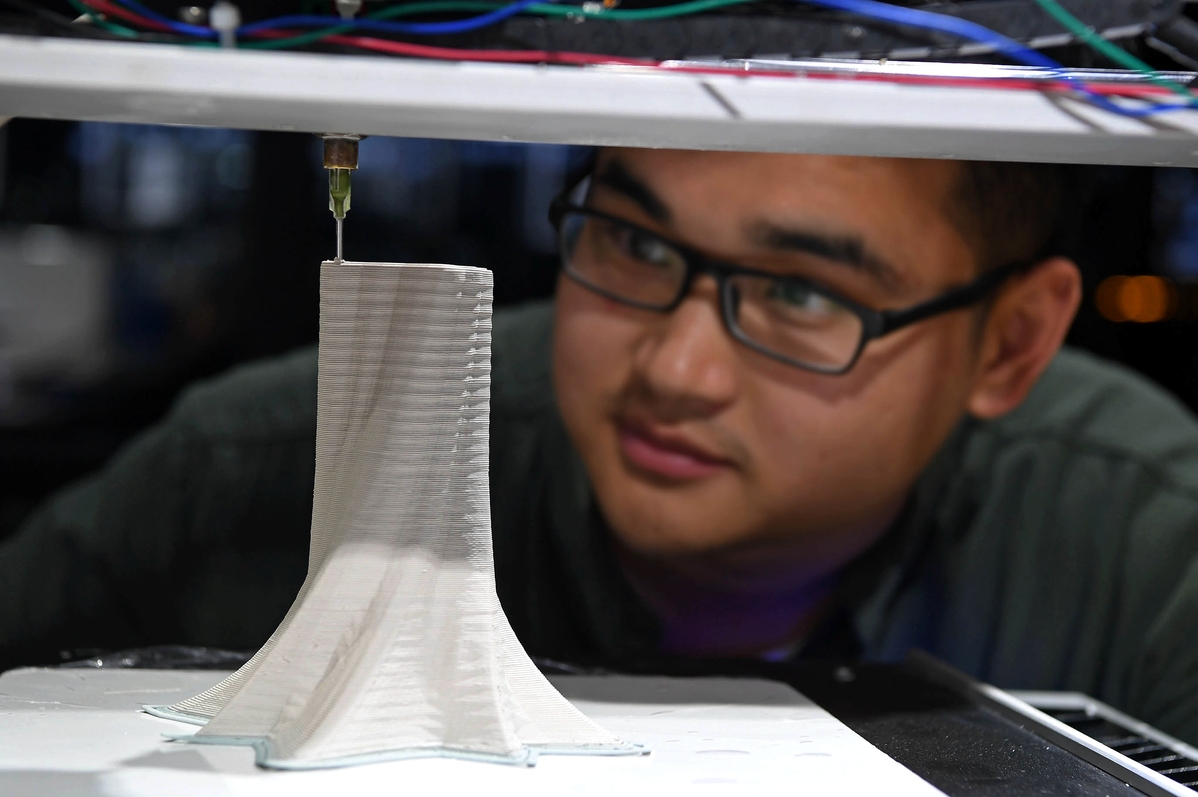New direction fires up China's porcelain capital
China Daily | Updated: 2019-01-30 09:55

Future plans
Last year, about 1,200 students, urban elites, foreign tourists and celebrities swarmed to Jinkeng, 8 kilometers to the east of Jingdezhen.
The tranquil village, surrounded by mountains, boasts elements that pique people's curiosity, such as fields and gardens, ancient buildings, archaeological treasures and, of course, porcelain.
In 2014, Huang Wei, a doctoral student of art history from Tsinghua University who was a lecturer at the Jingdezhen Ceramic Institute, discovered 15 porcelain kiln sites in Jinkeng that date to the Song Dynasty (960-1279).
In response, she established an eco-agriculture cooperative that allows local farmers to benefit from the preservation of history, and the Dongjiao (east suburb) School to spread knowledge about heritage protection.
"Development on the basis of culture is the future direction for Jingdezhen, while education is the key," Huang said.
She also provided simulated archaeological excavation and porcelain-repair classes, along with porcelain-making activities, experimental farming and sales of organic produce.
"What we are doing here is trying to integrate porcelain production, study, research and tourism," she said, adding that Jinkeng is the template for Jingdezhen's future development.
Huang's exploration of the integration of heritage protection and community development was lauded by European scholars at a seminar on heritage protection at the University of Copenhagen, Denmark, in December.
Liu, who is also a key planner of the development of Jingdezhen's porcelain industry, has high hopes for the commercialization of the city's unique culture.
"The porcelain-making tradition and culture have not been interrupted in the past millennium. This is what porcelain lovers around the world pay tribute to," Liu said.
"Jingdezhen should be an arts center for the world. We don't expect Taoxichuan to become a crowded scenic spot, but a paradise for craftsmen, designers and artists."
Taoxichuan has already seen the potential of cashing in on culture. Its sales revenue was 101 million yuan last year, a 36 percent rise from 2017.
"We have only renovated one factory, and there are nine more to come," Liu said.
In addition to maintaining tradition, Liu said the introduction of modern technology is inevitable.
Yishan Industrial Park, a subsidiary of the Jingdezhen Ceramic Culture Tourism Group, has imported seven German-made automated production lines, which will manufacture ceramic goods based on designs by traditional craftsmen.
"Our future products will be tailored and smartly produced with 3D printing and high-pressure grouting technologies, which can meet the demands of the young generation," Liu said.
The exploration of future growth in Jingdezhen has impressed Takeshi Yasuda, a famous potter from Japan who has lived in the city for 14 years.
"The future of Jingdezhen lies not in exports, but in meeting the rising demand of the Chinese people," the 75-year-old said.
"Jingdezhen is walking its own path in the post-industrial society."
























